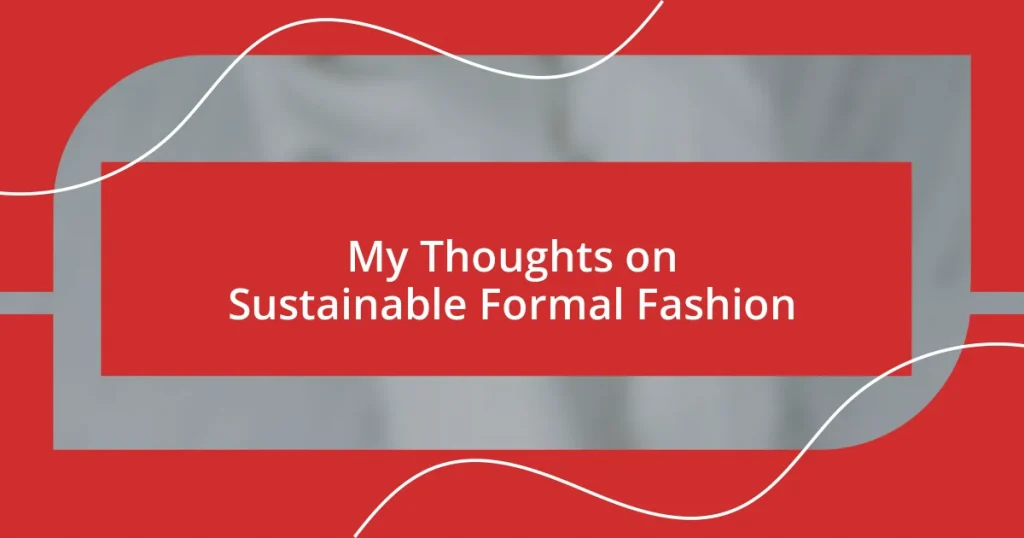Key takeaways:
- Sustainable formal fashion prioritizes quality, ethical practices, and environmentally friendly materials, encouraging conscious consumerism.
- The emotional connection to clothing enhances the appeal of sustainable choices, fostering meaningful conversations and community impact.
- Innovations like circular fashion and transparency in sourcing are crucial for the future of sustainable fashion, promoting a shared responsibility among consumers and brands.
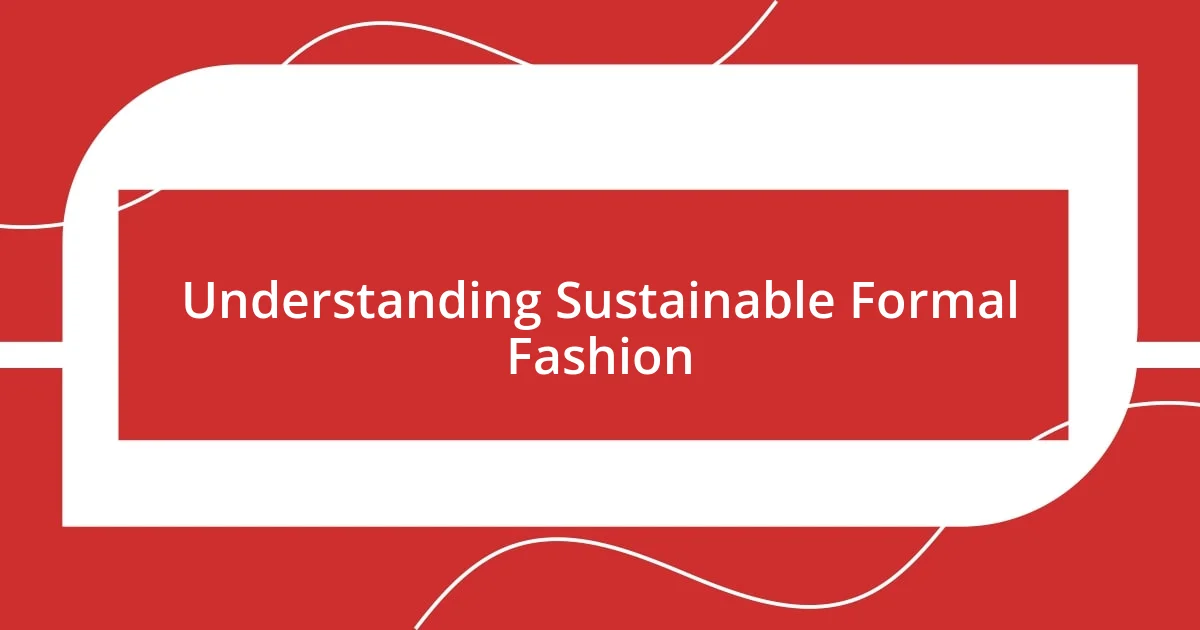
Understanding Sustainable Formal Fashion
Sustainable formal fashion is about more than just looking good; it’s a conscious choice that reflects our values. I remember attending a wedding where the guests were all dressed to the nines in outfits made from organic and recycled materials. It struck me how each piece told its own story, merging elegance with an eco-friendly ethos.
Crafting a sustainable wardrobe often means rethinking where and how we source our clothing. Have you ever wondered how much impact your clothing choices can have on the planet? When I learned about the significant waste produced by fast fashion, I felt a deep urge to shift toward brands that prioritize sustainability, like those who use natural dyes and ethical labor practices.
Understanding sustainable formal fashion requires a commitment to quality over quantity. I’ve found that investing in timeless pieces not only makes me feel more refined but also reduces the temptation to keep buying trendy outfits that quickly lose their appeal. Isn’t it rewarding to wear something that enhances your style while making a positive impact?
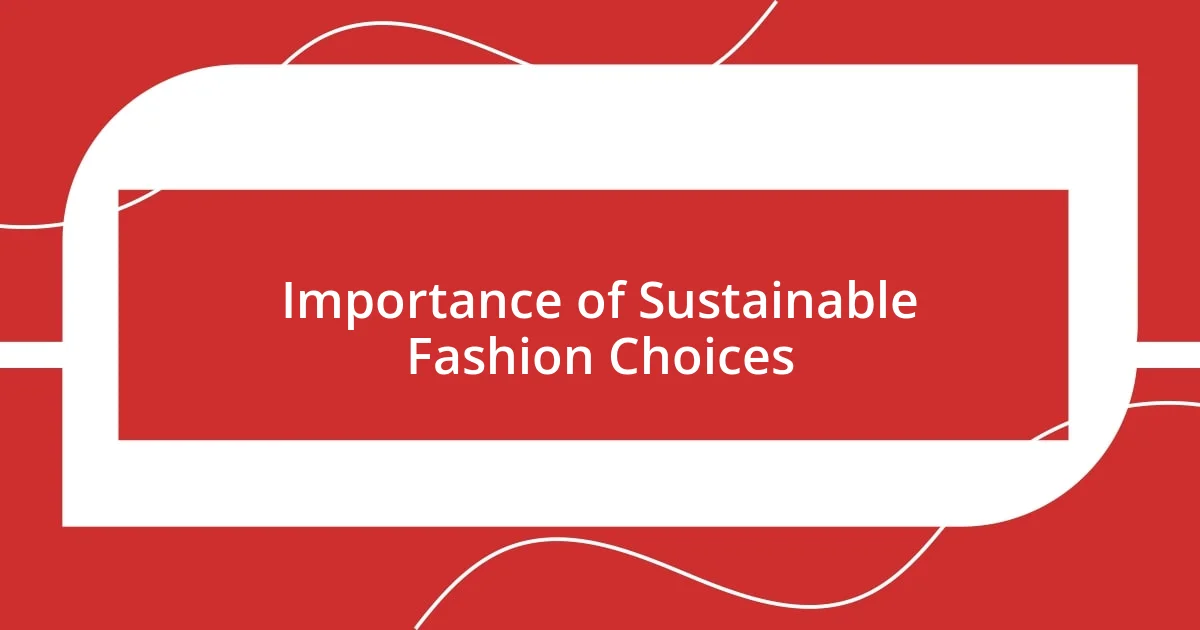
Importance of Sustainable Fashion Choices
Choosing sustainable fashion isn’t just about aesthetics; it’s also about making an impact. I recall the moment I learned that the fashion industry is a leading polluter, contributing significantly to water waste and carbon emissions. This understanding transformed my shopping habits, encouraging me to look for brands that minimize their environmental footprint, and it felt empowering to contribute to a solution rather than just being part of the problem.
The emotional connection we form with our clothing can guide us toward more responsible choices. I’ve often felt a sense of pride when wearing garments that are ethically produced. During a recent business event, a colleague complimented my dress, which was handcrafted from upcycled materials. Sharing that it had a story behind it not only sparked an engaging conversation but also inspired others to explore their own sustainable fashion options.
By prioritizing sustainable fashion choices, we support not only our planet but also communities that respect ethical labor practices. I came across a small brand that supports artisans in developing countries, and wearing their pieces carries a sense of connection and purpose. It’s remarkable how a single piece of clothing can create waves of positive change, making us feel like part of a larger movement toward sustainability.
| Aspect | Sustainable Fashion | Fast Fashion |
|---|---|---|
| Environmental Impact | Lowers carbon emissions and waste | High carbon footprint and waste disposal issues |
| Ethical Practices | Supports fair wages and labor conditions | Exploits cheap labor |
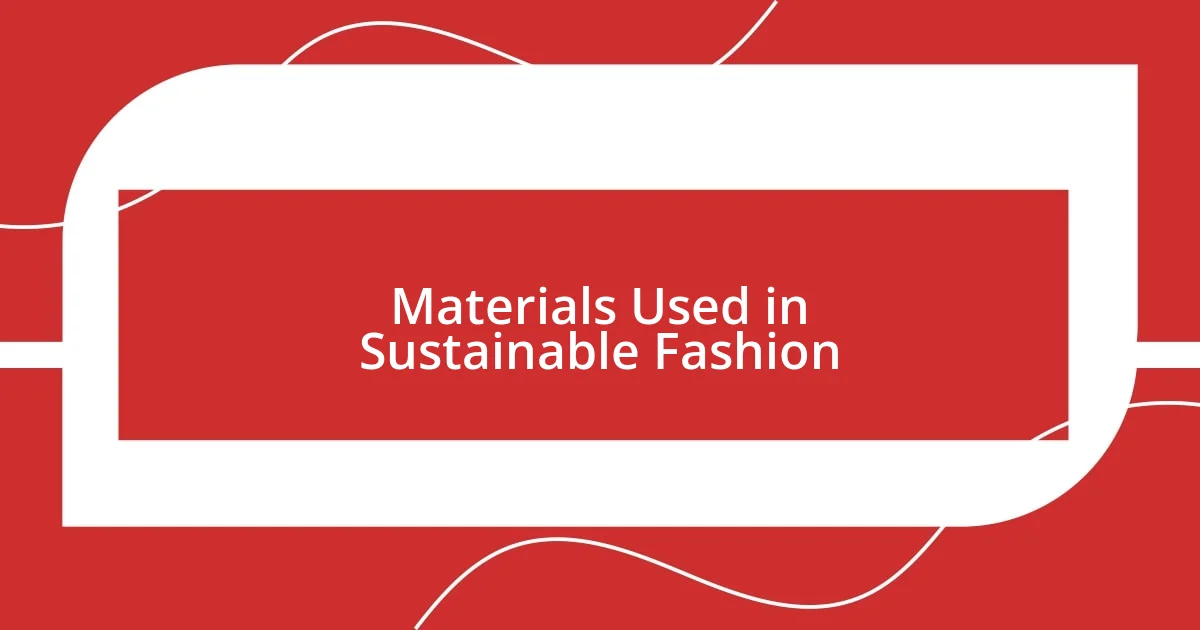
Materials Used in Sustainable Fashion
The materials used in sustainable fashion play a crucial role in shaping both the environmental impact and the overall experience of wearing clothing. When I discovered the world of organic cotton, Tencel, and hemp, it felt like a revelation. Each fabric not only feels good against the skin but also minimizes harm to our planet. I still remember the first time I touched a dress made from Tencel; it’s incredibly soft and breathable, making it a luxury I indulge in more often now.
Here are some key materials commonly found in sustainable fashion:
- Organic Cotton: Grown without harmful pesticides and fertilizers, reducing water usage and soil degradation.
- Hemp: Requires minimal water and improves soil health. It’s also highly durable, making it perfect for long-lasting garments.
- Tencel (Lyocell): Made from sustainably sourced wood pulp, this fabric is biodegradable and known for its silky feel.
- Recycled Polyester: Created from post-consumer plastic bottles, it diverts waste from landfills and reduces reliance on new petroleum-based fibers.
- Piñatex: A unique leather alternative made from pineapple leaf fibers, it supports local economies and reduces agricultural waste.
Embracing these materials not only aligns with my values but also opens up a world of creativity in style. I recall a formal event where I wore a blazer made from recycled materials. The compliments I received were not just for the design but for the story behind it, sparking discussions on sustainability. I had a sense of pride knowing I was contributing to a more mindful fashion movement, showcasing that we can look elegant while caring for our planet.
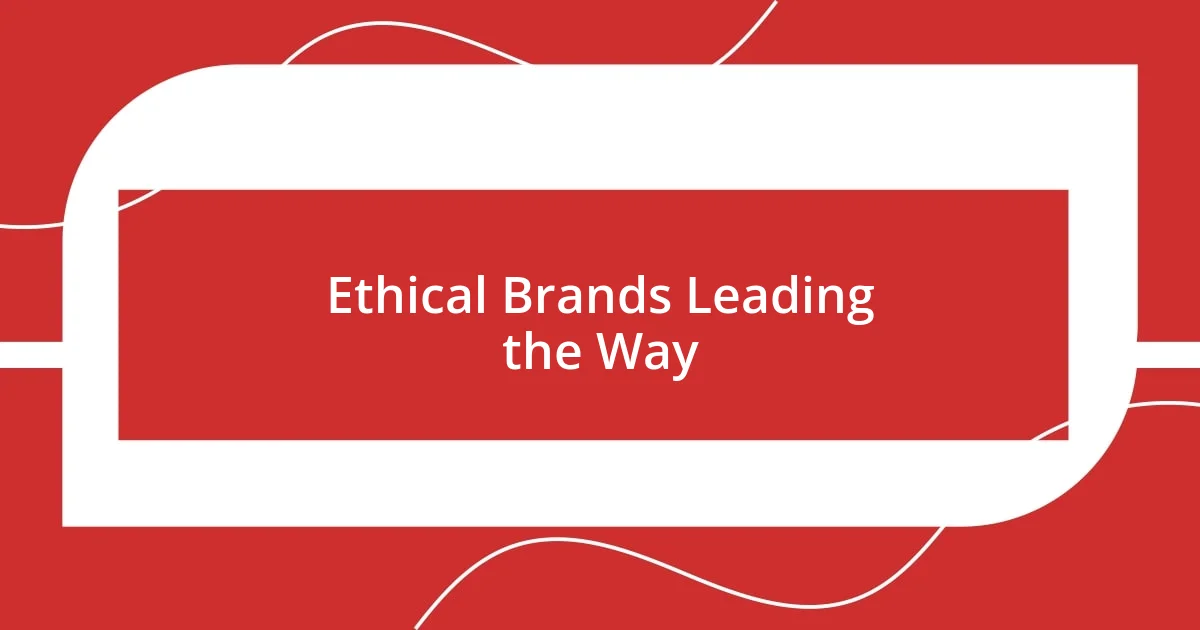
Ethical Brands Leading the Way
It’s inspiring to see how ethical brands are leading the charge in the sustainable fashion movement. For instance, I recently discovered a brand that uses eco-friendly dyes and local production methods, which not only supports artisans but also drastically cuts down on transportation emissions. Wearing their pieces made me feel like I was embodying a message: fashion can be both beautiful and responsible.
When I first tried on a suit from a renowned sustainable fashion label, I was pleasantly surprised by the craftsmanship. Each stitch seemed to tell a story, reflecting a commitment to ethical practices. It got me thinking—how often do we consider the impact of the brand behind our clothes? I realized the joy I found knowing I was supporting a company that prioritizes fair wages and sustainable materials added to the overall experience of wearing that suit.
One brand that stands out in my mind is a small label that specializes in using reclaimed fabrics. The first time I wore one of their dresses to a gathering, a friend asked where I got it, and I felt a surge of excitement as I detailed its history. Sharing that experience not only connected us but also sparked a conversation about the importance of supporting brands that truly care. Isn’t it amazing how something as simple as fashion can inspire dialogue around sustainability and responsibility?
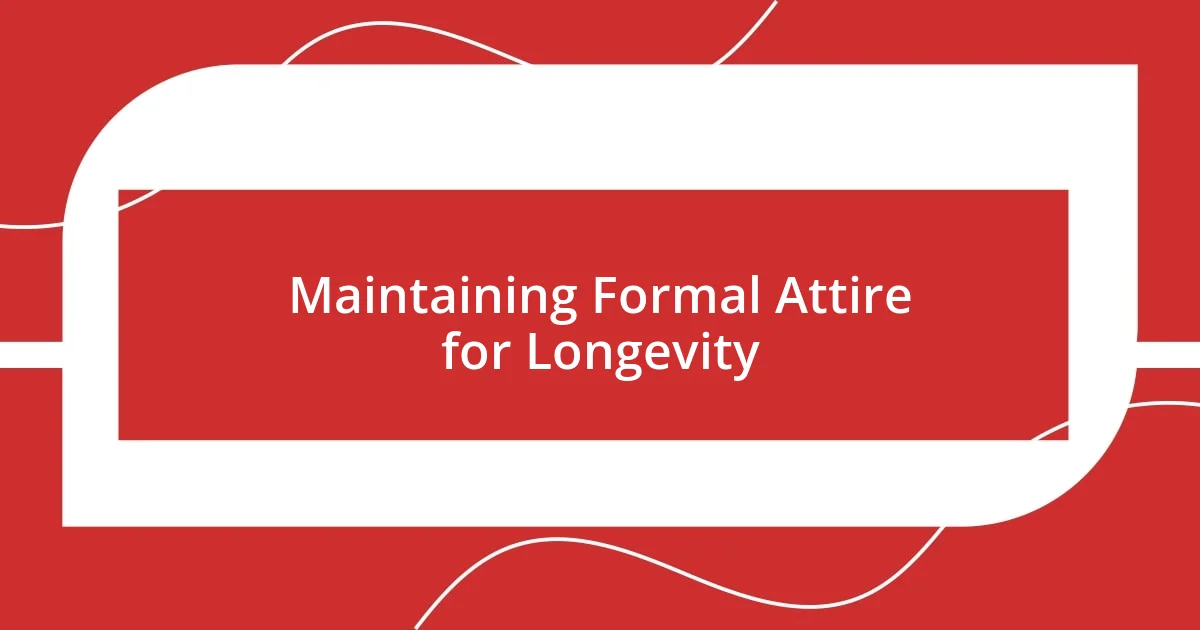
Maintaining Formal Attire for Longevity
Maintaining the longevity of formal attire requires more than just proper storage; it also demands attentive care. I learned this firsthand when I invested in a tailored wool suit that quickly became a staple in my wardrobe. Over time, I realized that consistent dry cleaning—even with eco-friendly methods—can wear down the fabric. Now, I make it a point to gently brush my suit and air it out after each wear, preserving its shape and texture, which not only extends its life but also keeps it looking sharp.
Another essential practice is to pay attention to the details. I remember the frustration I felt the first time a small tear appeared on my favorite dress shirt. Instead of hiding it away, I took a needle and thread to it, making a simple but effective repair. Not only did this save me from investing in a new piece, but it also added a unique touch that made it feel even more personal. I often ask myself—how many opportunities do we overlook to revive our garments in meaningful ways?
Investing in quality hangers and storage can also make a significant difference in maintaining formal wear. When I switched to padded hangers for my dresses and blazers, I noticed way less stretching and less damage over time. It’s a small adjustment, but the benefits are tremendous. Isn’t it fascinating how the choices we make in caring for our clothing can significantly impact their lifespan? Every thoughtful action brings us closer to a sustainable approach to fashion.
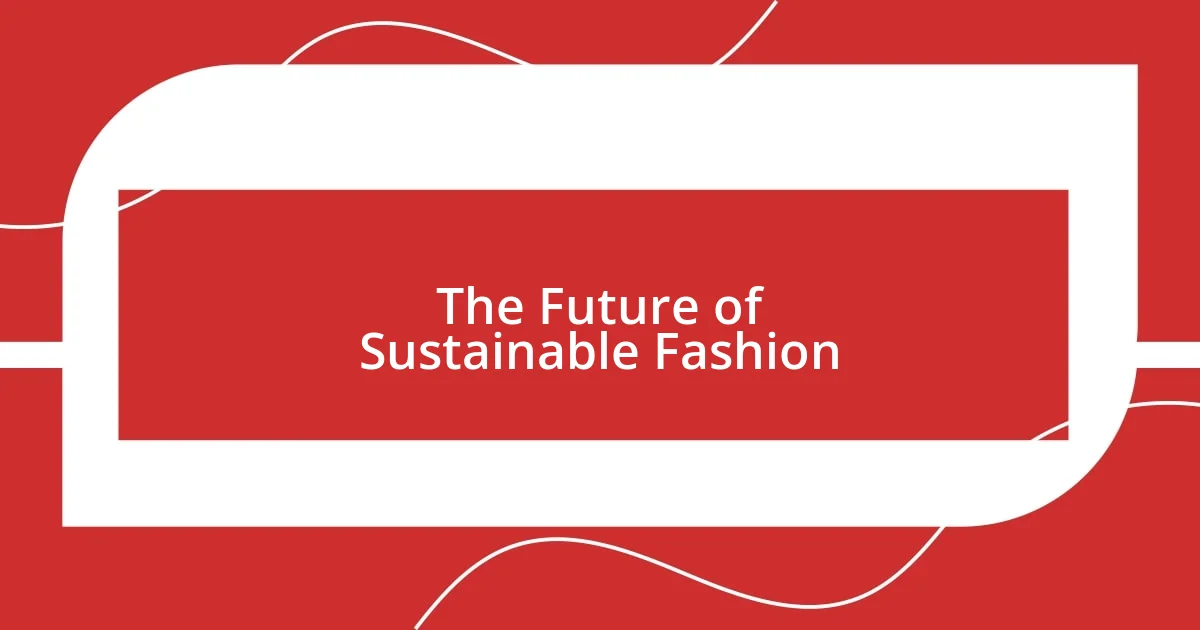
The Future of Sustainable Fashion
The future of sustainable fashion really excites me, especially as new innovations come to life. Not long ago, I attended a virtual fashion expo showcasing materials made from algae and biodegradable plastics. It felt surreal to think that some of the textiles used for our outfits could, instead of harming the planet, contribute to its healing. Isn’t it fascinating how technology can merge with sustainability?
I see circular fashion taking the forefront, where garments are designed for their entire lifecycle. Recently, I participated in a clothing swap with friends, and it struck me how revitalizing this idea can be. Instead of contributing to landfill waste, we can breathe new life into someone else’s discarded fashion. Do we really need more clothes, or can we simply share and refresh what we already have?
Looking ahead, I believe transparency will reshape the industry. I vividly recall a discussion with a designer who openly shared the sourcing of her materials and labor practices. Her honesty made me feel more connected to her brand. If consumers demand that kind of integrity, won’t it compel even the big players to rethink their practices? The road to sustainable fashion is paved with choices, and every small action contributes to a larger movement.










